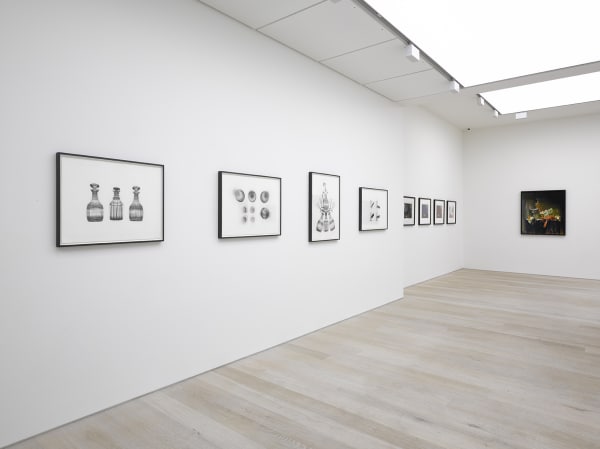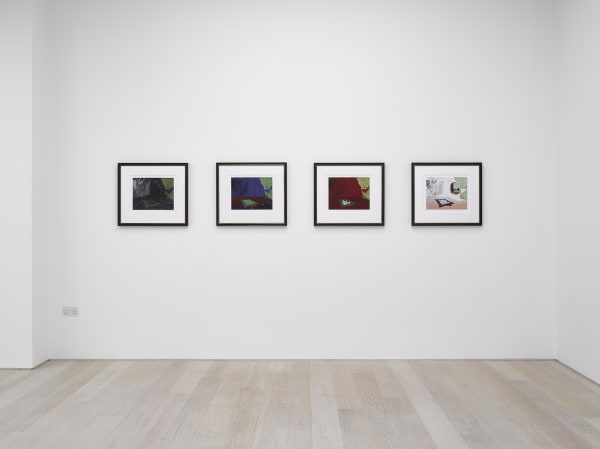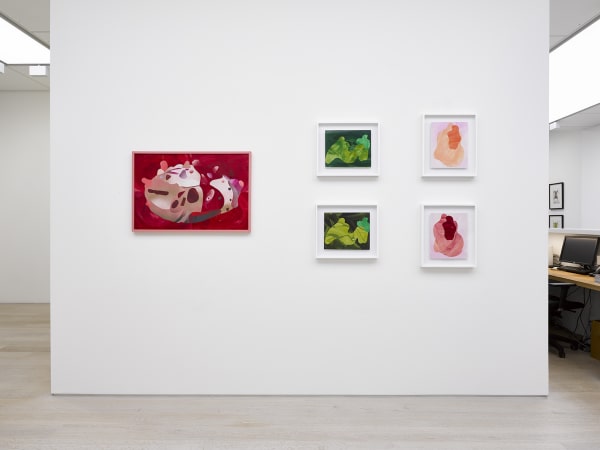History in the Making
History in the Making explores work by Pablo Bronstein, Gordon Cheung, Dexter Dalwood, Walton Ford, Paul Noble, Cornelia Parker, Francis Ruyter and Clare Woods, which make reference to, or appropriate, historical art as part of their working practice.
Whether it be painting, illustration, sculpture, photography, architecture or historical objects, each of these artists openly acknowledge their sources of inspiration, which includes collections housed in the Rijksmuseum, Amsterdam, the Bodleian Library, University of Oxford and the Library of Congress, Washington D.C. Each of these artists is drawing on history as a way of making new images for the future.
Cornelia Parker's (b. 1956) interest in the early work of nineteenth century photography pioneer William Henry Fox Talbot led her to his original collection of glassware, now in the Bodleian Library, University of Oxford. Parker borrowed the last eight surviving glass objects that were captured in some of the world's first photographs, and used them to make a series of photogravures prints.
Francis Ruyter (b. 1968) delves into a very different archive, the Library of Congress's FSA archive of Depression-era photographs. Ruyter openly acknowledges the authorship of the original images, transforming iconic stark black and white photographic images into a vividly coloured relief print or painting.
Gordon Cheung's (b. 1975) negotiation between the past and presents comes via his use of images of Dutch seventeenth-century paintings which are held in a free, publically available online archive of the Rijksmuseum in Amsterdam. Cheung takes the paintings and uses a computer algorithm to 'glitch' the image. Cheung's selection of this genre of still life is a comment on the 'fragility of existence, the futility of materialism against a backdrop of Holland's immense trading power.' For his first print project with the Alan Cristea Gallery, Pablo Bronstein (b.1977) has been inspired by eighteenth-century architectural engravings, and his own personal collection of eighteenth-century silverware, to make three new hand-coloured etchings.
The Apartment (after Delacroix), a series of four prints, by Dexter Dalwood (b. 1960), take as their starting point Eugène Delacroix's painting, Femmes d'Alger dans leur appartement, 1834. In Dalwood's series of screenprints, the women are no longer in the apartment and the four images follow a narrative from night through to dawn and finally to an explosion. Dalwood is reinterpereting the genre of History Painting for a contemporary audience.
Walton Ford (b. 1960) makes paintings and prints in the style of nineteenth-century naturalist illustrations by artists such as John James Audubon, Karl Bodmer and George Catlin. In Pestvogel, 2016, which translates to plague-bird, Ford depicts a widely recorded waxwing invasion during the winter of 1913-14, which was later assumed to be an omen for the First World War. Ford's print is a literal exploration of what kind of imagery could accompany this fantastic superstition.
Paul Noble's (b. 1963) first print project with the Alan Cristea Gallery consists of a set of six etchings. Noble has taken details from his drawing Ye Olde Ruin, 2003-4, part of the monumental drawing project Nobson Newtown, and has carefully redrawn them into a copper plate using drypoint and aquatint to create elaborately complex, beautifully detailed, surreal scenes. Noble's creation of a symbolic city draws inspiration as diverse as ancient Chinese scrolls and Japanese sculpture to Hieronymous Bosch and Pieter Bruegel the Elder.
Clare Woods' (b. 1972) art historical influences come from the mid-twentieth century British artists such as Barbara Hepworth, Eduardo Paolozzi and Henry Moore. For this show Woods, whose work is often described as 'sculpting an image in paint', draws inspiration from the three-dimensional forms of a reclining figure, a portrait head or a mother and child for a series of hand-painted collages.
Featuring:
Clare Woods, Cornelia Parker, Dexter Dalwood, Francis Ruyter, Gordon Cheung, Pablo Bronstein and Paul Noble







